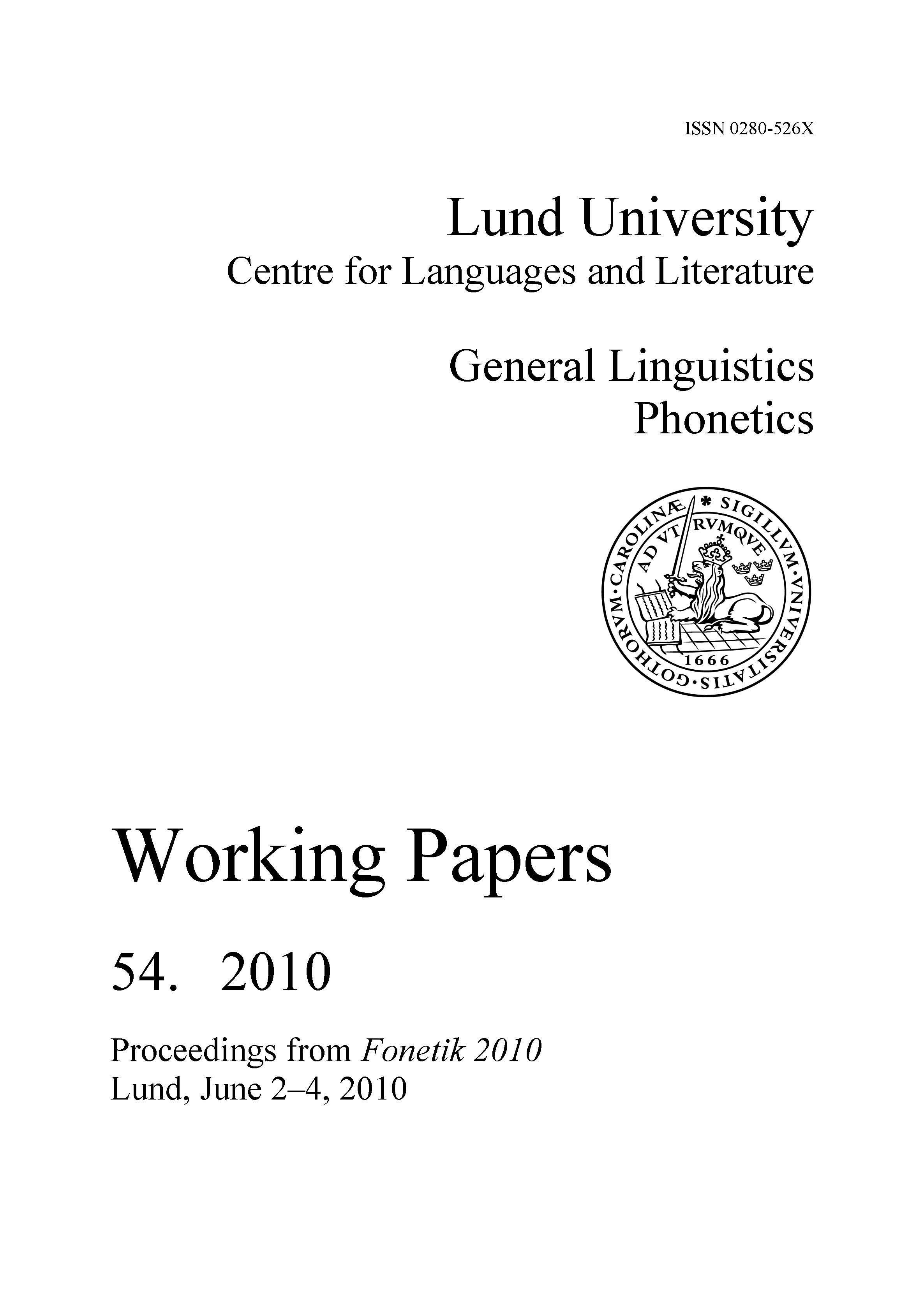Fo curves – smooth, seamless yet pulsed?
Abstract
This paper presents pilot data and analyses suggesting that Central Swedish F0 contours can be described with good numerical accuracy as sequences of syllabic overlapping quasi-Gaussian pulses. Each such building block is temporally aligned with a given syllable. It is specified by its ‘amplitude’ (peak frequency) and the temporal extent of its rise and fall slopes. According to the proposed account an F0 curve is seen as the sum of the bell-shaped pulses and a declination ramp.
In revisiting classic publications on respiratory and phonatory speech processes one notes that, although Stetson’s ‘chest pulse’ notion is rejected by most phoneticians today, one nonetheless finds a great deal of evidence for increased Ps and EMG activity in stressed syllables (language examples: English and Swedish). Curiously, some of that evidence comes from the work by Ladefoged, one of Stetson’s fiercest critics.
Are the results of the present modeling merely a fluke outcome of the curve fitting exercise, or do they tell us something significant about the motor control of prosodic phenomena in Swedish?. The following facts lend preliminary support to the latter possibility. 1. Syllables with main and secondary lexical stress show larger peaks than syllables with weak or no lexical stress. 2. Pulses overlap in time thereby often losing their original discrete nature and hiding a possible pulsatile origin of F0 characteristics. 3. The bell-shaped pulses contribute a rise-fall component to the output F0 trace and seem well suited to handling the correlates of the tonal accents. As expected the main grave-acute difference was found to be one of timing. 4. One pulse per syllable was sufficient. It occurred within the time frame of the syllable. However the surface location of an F0 peak was sometimes temporally shifted away from its associate syllable (as seen in 4, 40, 400 and 32, 320, 3200 sequences). This phenomenon turned out to be successfully predicted by the syllable-aligned superposition model.


